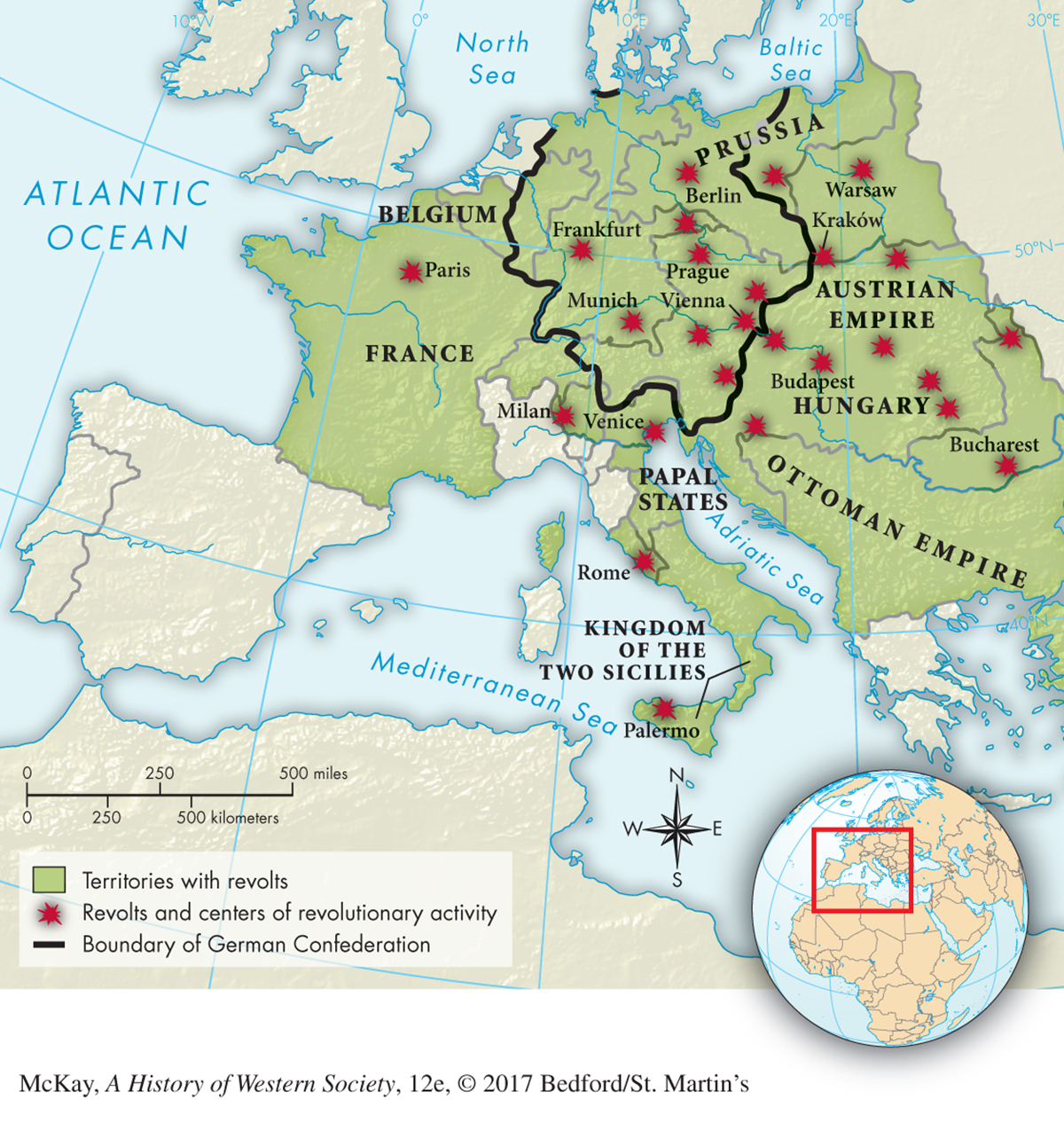A History of Western Society: Printed Page 712
A History of Western Society, Value Edition: Printed Page 681
A History of Western Society, Concise Edition: Printed Page 710
Revolution and Reaction in the Austrian Empire
Throughout central Europe, the first news of the upheaval in France evoked feverish excitement and then popular revolution, lending credence to Metternich’s famous quip “When France sneezes, all Europe catches cold.” Across the Austrian Empire and the German Confederation, liberals demanded written constitutions, representative government, and greater civil liberties from authoritarian regimes (Map 21.3). When governments hesitated, popular revolts broke out. Urban workers and students served as the shock troops, but they were allied with middle-

The revolution in the Austrian Empire began in Hungary in March 1848, when nationalistic Hungarians demanded national autonomy, full civil liberties, and universal suffrage. Anti-
Yet the revolutionary coalition lacked stability. When the monarchy abolished serfdom, with its degrading forced labor and feudal services, the newly free peasants lost interest in the political and social questions agitating the cities. Meanwhile, the coalition of urban revolutionaries broke down along class lines over the issue of socialist workshops and universal voting rights for men.
Conflicting national aspirations further weakened and ultimately destroyed the revolutionary coalition. In March the Hungarian revolutionary leaders pushed through an extremely liberal, almost democratic, constitution for the Kingdom of Hungary. But the Hungarian revolutionaries also sought to transform the mosaic of provinces and peoples in their territories into a unified, centralized Hungarian nation. The minority groups that formed half of the population — the Croats, Serbs, and Romanians — rejected such unification (see Map 21.2). Each group felt entitled to political autonomy and cultural independence. In a similar way, Czech nationalists based in Prague and other parts of Bohemia came into conflict with German nationalists living in the same region. Thus desires for national autonomy within the Austrian Empire enabled the monarchy to play off one ethnic group against the other.
Finally, conservative aristocratic forces rallied under the leadership of the archduchess Sophia, a Bavarian princess married to the Habsburg emperor’s brother. Deeply ashamed of the emperor’s collapse before a “mess of students,” she insisted that Ferdinand I, who had no heir, abdicate in favor of her son, Franz Joseph.15 Powerful nobles organized around Sophia in a secret conspiracy to reverse and crush the revolution.
The first conservative breakthrough came when the army bombarded Prague and savagely crushed a working-
When Franz Joseph (r. 1848–1916) was crowned emperor of Austria immediately after his eighteenth birthday in December 1848, only the Hungarians had yet to be brought under control. Another determined conservative, Nicholas I of Russia (r. 1825–1855), obligingly lent his iron hand. On June 6, 1849, 130,000 Russian troops poured into Hungary and subdued the country after bitter fighting. For a number of years, the Habsburgs ruled the Kingdom of Hungary as a conquered territory.